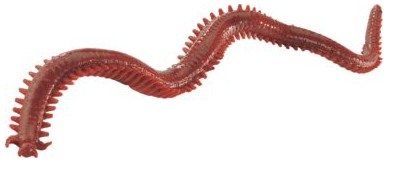The Only Guide for Where To Find Red Wigglers
The Only Guide for Where To Find Red Wigglers
Blog Article
The Best Guide To Where To Find Red Wigglers
Table of ContentsHow Where To Find Red Wigglers can Save You Time, Stress, and Money.Top Guidelines Of Where To Find Red WigglersWhere To Find Red Wigglers for DummiesNot known Factual Statements About Where To Find Red Wigglers
Bait angling with worms is a tried and true, environment-friendly technique that can assist you attract a wide variety of fish types. And it's all about the information, especially if you intend to land the large ones. With so several types of fishing worms available, understanding which ones to choose as fish bait is a kind of scientific research.Today, we're speaking regarding the lotion of the crop of fish lures: worms the divine grail of bait angling - Where To Find Red Wigglers. You might think freshwater worms are the ideal freshwater lure, but below's a whole globe of wormy marvel out there waiting to be explored!
Hell, even if you're fishing for your dinner, we've obtained you covered also. So, order your bait container and get ready to join the ranks of the worm-wielding elite by learning all about the slimiest, squirmiest, and many efficient angling worms around. Aside from being an usual composting worm, these are the staple worms in the fishing neighborhood, as well, and for an excellent factor.
Rumored Buzz on Where To Find Red Wigglers
While Nightcrawlers might have a syndicate on the angling scene, do not mark down the power of various other worm varieties. These little wigglers are your secret tools if you're looking for a proven way to capture smaller fish.
These black-and-yellow worms are tiny but mighty, loading a punch when it involves bring in fish, specifically smaller ones. Their soft appearance and wonderful fragrance make them irresistible to Panfish, Trout, and Crappie, as well as Chub, Carp, and also Catfish. Although not practically a worm (it's in fact moth larvae), these little animals have an online reputation for being a yummy treat on the block as a result of their high-fat content (according to the fish, anyway) and have likewise proven to be decent angling worms throughout the cooler seasons.

Where To Find Red Wigglers Fundamentals Explained
Worms are sensitive to warmth and light, and they can die promptly if exposed to them. Stay clear of overcrowding the container, as this can cause anxiety to the worms and lead look at this web-site to their fatality.
Order your pole and reel, stock up on some quality worm lure, and get all set to hook your dream catch! Experiment with various types of angling bait worms and find out what jobs best for you in your fishing journeys.

If you're managing hostile fish or angling in a "catch and launch" location or one that just permits fly and fabricated appeals, then it's time to damage out the appeals. It depends on what click resources you're fishing for and where you're fishing. Red worms are smaller and, therefore, excellent for trout and panfish, while Nightcrawlers are bigger and far better for larger varieties like bass and catfish.
Where To Find Red Wigglers for Beginners
Naturally, capturing worms isn't everyone's favorite. If you're not in the state of mind to obtain your hands dirty and questioning where to find worms, you can just purchase them from Uncle Jim's Worm Farm. Why trouble with the problem of digging when you can have them supplied right to your doorstep?.
Fishing with Worms is all about selecting the right worm, specifically if you want to land the large ones. To determine what are the best worms for bait fishing we have examined 4 very typical worms as angling lure, the Red Wiggler, the really popular Canadian Nightcrawler, the African Nightcrawler, which is really prominent site web in Australia, and last however not least the European Nightcrawler.

That being said, when we fished with Red Wigglers we had rather excellent success. They are not provided the name "Red Wiggler" for absolutely nothing. They are pretty active responsible and because of this, seem to draw in fish relatively well. Since these worms are additionally the most common composting worm in the globe and can be increased in a regulated setting very easily, they are usually readily available locally and are easy to find.
Report this page